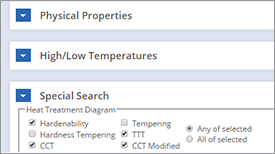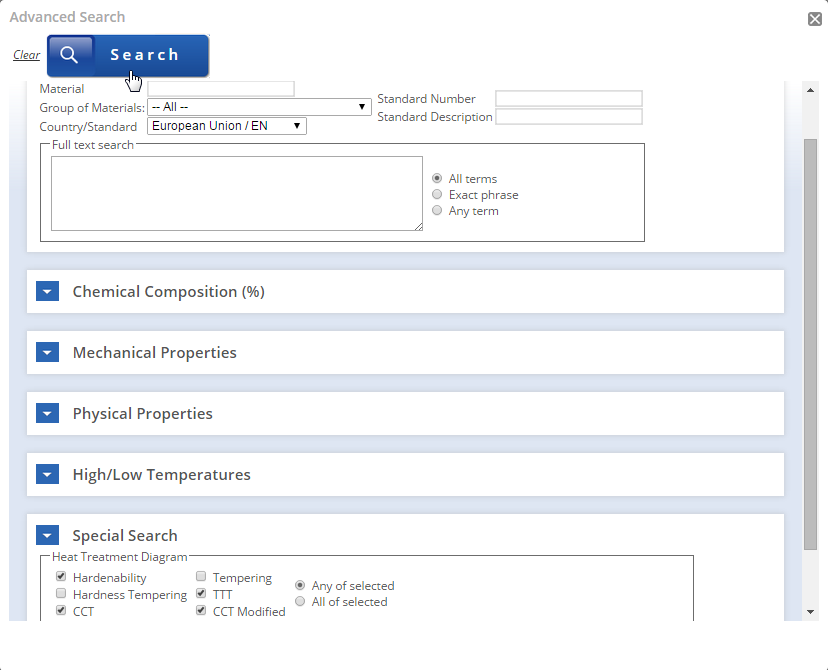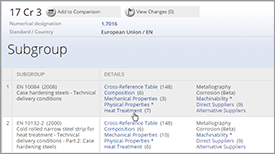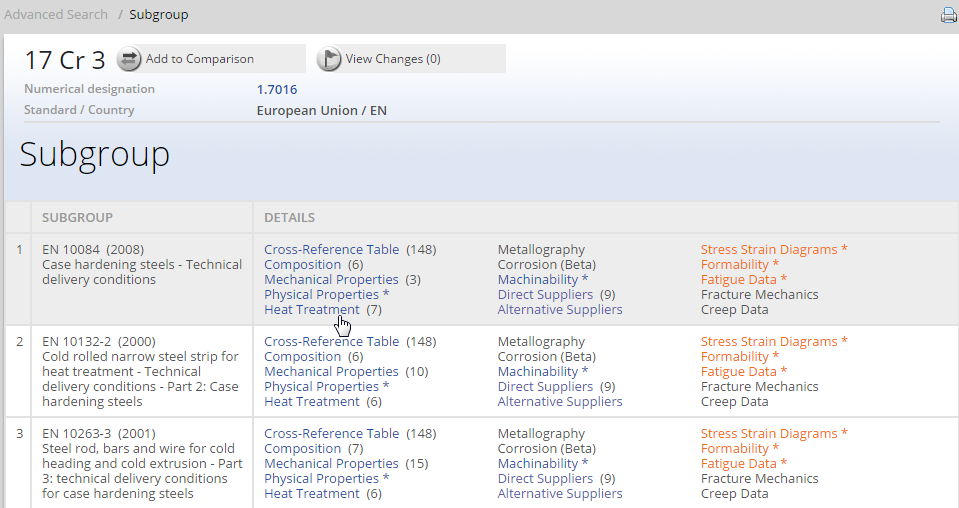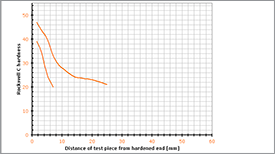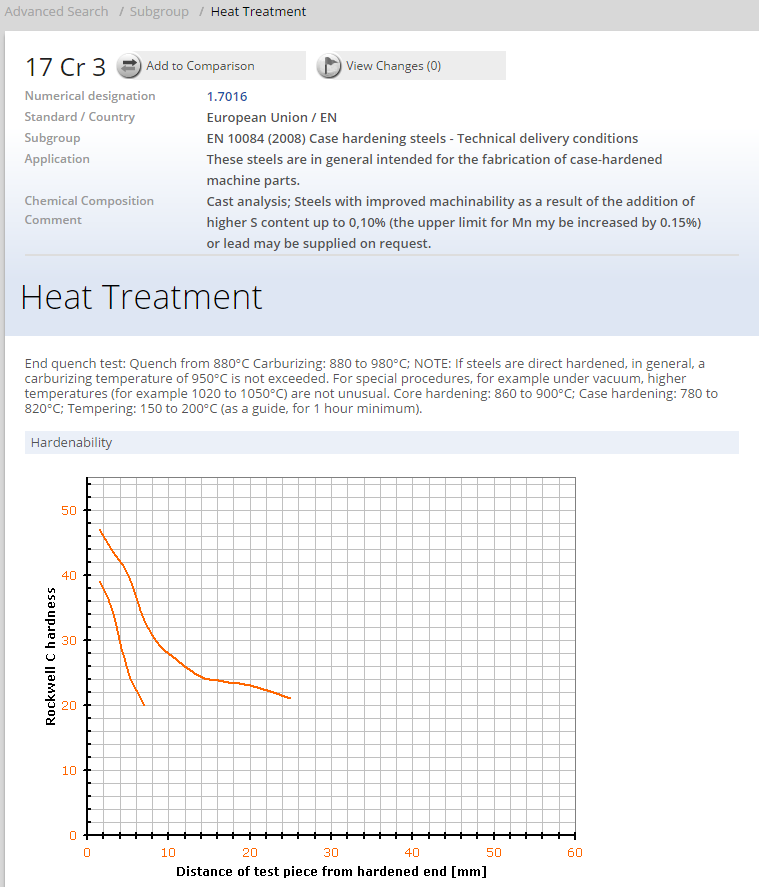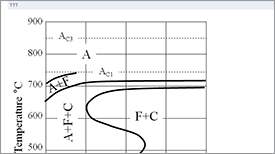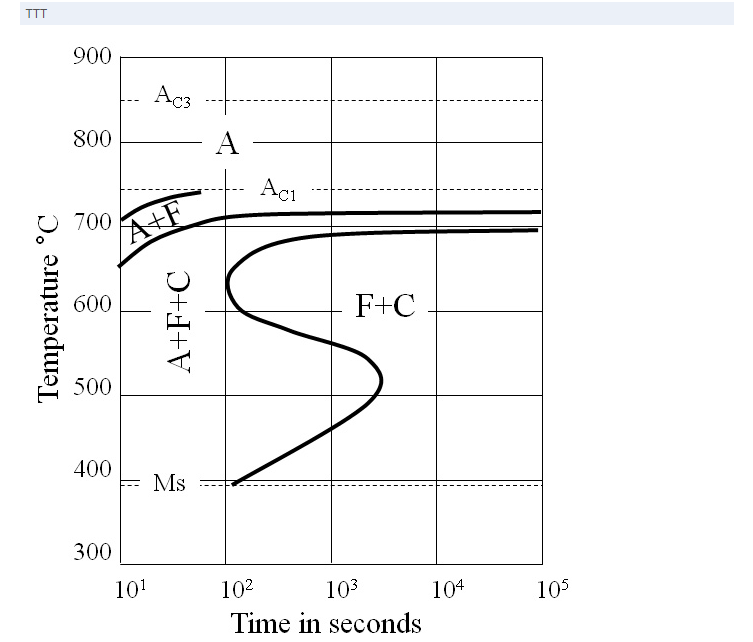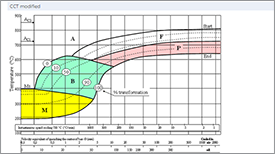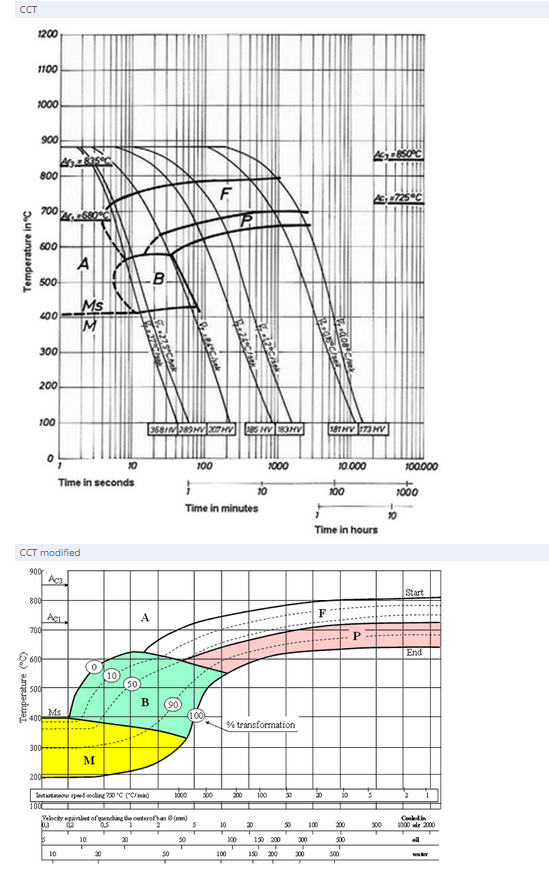In its effects on steel, carbonitriding is similar to liquid cyaniding. Because of problems in disposing of cyanide-bearing wastes, carbonitriding is often preferred over liquid cyaniding. In terms of case characteristics, carbonitriding differs from carburizing and nitriding in that carburized cases normally do not contain nitrogen, and nitrided cases contain nitrogen primarily, whereas carbonitrided cases contain both.
Carbonitriding is used primarily to impart a hard, wear-resistant case, generally from 0.075 to 0.75 mm (0.003 to 0.030 in.) deep. A carbonitrided case has better hardenability than a carburized case. Consequently, by carbonitriding and quenching, a hardened case can be produced at less expense within the case-depth range indicated, using either carbon or low-alloy steel. Full hardness with less distortion can be achieved with oil quenching, or, in some instances, even gas quenching, employing a protective atmosphere as the quenching medium.
Steels commonly carbonitrided include those in the AISI 1000, 1100, 1200, 1300, 1500, 4000, 4100, 4600, 5100, 6100, 8600, and 8700 series, with carbon contents up to about 0.25%. Also, many steels in these same series with a carbon range of 0.30 to 0.50% are carbonitrided to case depths up to about 0.3 mm (0.01 in.) when a combination of a reasonably tough, through-hardened core and a hard, long-wearing surface is required (shafts and transmission gears are typical examples). Steels such as 4140, 5130, 5140, 8640, and 4340 for applications like heavy-duty gearing are treated by this method at 845°C (1550°F).
Often, carburizing and carbonitriding are used together to achieve much deeper case depths and better engineering performance for parts than could be obtained using only the carbonitriding process. This process is applicable particularly with steels with low case hardenability, that is, the 1000, 1100, and 1200 series steels. The process generally consists of carburizing at 900 to 955°C (1650 to 1750°F) to give the desired total case depth (up to 2.5 mm. or 0.100 in.), followed by carbonitriding for 2 to 6 h in the temperature range of 815 to 900°C (1500 to 1650°F) to add the desired carbonitrided case depth. The subject parts can then be oil quenched to obtain a deeper effective and thus harder case than would have resulted from the carburizing process alone. The addition of the carbonitrided surface increases the case residual compressive stress level and thus improves contact fatigue resistance as well as increasing the case strength gradient.
When the carburizing/carbonitriding processes are used together, the effective case depth (50 HRC) to total case depth ratio may vary from about 0.35 to 0.75 depending on the case hardenability, core hardenability, section size, and quenchant used.
The fundamental problem in controlling carbonitriding processes is that the rate of nitrogen pick-up depends on the free ammonia content of the furnace atmosphere and not the percentage of ammonia in the inlet gas. Unfortunately, no state-of-the-art sensor for monitoring the free ammonia content of the furnace atmosphere has yet been developed.
Case Composition. The composition of a carbonitrided case depends on the type of steel and on the process variables of temperature, time, and atmosphere composition. In terms of steel type, the case depth achieved during a given carbonitriding process will be lower in steels containing higher amounts of strong nitride formers such as aluminum or titanium.
In terms of process variables, the higher the carbonitriding temperature, the less effective is the ammonia addition to the atmosphere as a nitrogen source, because the rate of spontaneous decomposition of ammonia to molecular nitrogen and hydrogen increases as the temperature is raised.
At a given temperature, the fraction of the ammonia addition that spontaneously decomposes is dependent on the residence time of the atmosphere in the furnace: the higher the total flow of atmosphere gases, the lower the fraction of the ammonia addition that decomposes to nitrogen and hydrogen. The addition of ammonia to a carburizing atmosphere has the effect of dilution by the following reaction:
2NH3 →N2 + 3H2
Dilution with nitrogen and hydrogen affects measurements of oxygen potential in a similar manner; the carbon potential possible with given oxygen potential is higher in a carburizing atmosphere than in a carbonitriding atmosphere. Water vapor content, however, is much less affected by this dilution. Thus, the amount of dilution and its resulting effect on the atmosphere composition depends on the processing temperature, the amount of ammonia introduced, and the ratio of the total atmosphere gas flow rate to the volume of the furnace.
Depth of Case. Preferred case depth is governed by service application and by core hardness. Case depths of 0.025 to 0.075 mm (0.001 to 0.003 in.) are commonly applied to thin pans that require wear resistance under light loads. Case depths up to 0.75 mm (0.030 in.) may be applied to parts for resisting high compressive loads. Case depths of 0.63 to 0.75 mm (0.025 to 0.030 in.) may be applied to shafts and gears that are subjected to high tensile or compressive stresses caused by torsion, bending, or contact loads.
Medium-carbon steels with core hardnesses of 40 to 45 HRC normally require less case depth than steels with core hardnesses of 20 HRC or below. Low-alloy steels with medium-carbon content, such as those used in automotive transmission gears, are often assigned minimum case depths of 0.2 mm (0.008 in.).
Measurements of the case depths of carbonitrided parts may refer to effective case depth or total case depth, as with reporting case depths for carburized parts. For very thin cases, usually only the total case depth is specified. In general, it is easy to distinguish case and core microstructures in a carbonitrided piece, particularly when the case is thin and is produced at a low carbonitriding temperature; more difficulty is encountered in distinguishing case and core when high temperatures, deep cases, and medium-carbon or high-carbon steels are involved. Whether or not the core has a martensitic structure is also a contributing factor in case-depth measurements.
Hardenability of Case. One major advantage of carbonitnding is that the nitrogen absorbed during processing lowers the critical cooling rate of the steel. That is, the hardenability of the case is significantly greater when nitrogen is added by carbonitriding than when the same steel is only carburized. This permits the use of steels on which uniform case hardness ordinarily could not be obtained if they were only carburized and quenched. Where core properties are not important, carbonitriding permits the use of low-carbon steels, which cost less and may have better machinability or formability.
Because of the hardenability effect of nitrogen, carbonitriding makes it possible to oil quench steels such as 1010, 1020, and 1113 to obtain martensitic case structures. Because of lower processing temperatures and/or the use of less severe quenches, carbonitriding may produce less part distortion and better control of dimensions than carburizing, and thus may eliminate the need for straightening or final grinding operations.
Hardness Gradients. Hardness at various levels in the case depends on the microstructure. When the carbonitriding atmosphere was relatively high in ammonia (11% NH3), the nitrogen content of the case was high, and enough austenite was retained after quenching to lower the hardness to 48 HRC, at a depth of 0.025 mm (0.001 in.) below the surface. The amount of retained austenite was decreased, and hardness consequently was increased, either by lowering the ammonia flow rate from 0.57 to 0.14 m3/h, which reduced the ammonia content of the furnace atmosphere from 11 to 3%, or by introducing a 15-min diffusion period at the end of the carbonitriding operation. Either treatment increased the hardness to meet or exceed a specified minimum value of 55 HRC.
Applications. Although carbonitnding is a modified carburizing process, its applications are more restricted than those of carburizing. As has been stated previously, carbonitriding is largely limited to case depths of about 0.75 mm (0.03 in.) or less, while no such limitation applies to carburizing. Two reasons for this are: carbonitriding is generally done at temperatures of 870°C (1600°F) and below, whereas, because of the time factor involved, deeper cases are produced by processing at higher temperatures; and the nitrogen addition is less readily controlled than is the carbon addition, a condition that can lead to an excess of nitrogen, and, consequently, to high levels of retained austenite and case porosity when processing times are too long.
The resistance of a carbonitrided surface to softening during tempering is markedly superior to that of a carburized surface. Other notable differences exist in terms of residual-stress pattern, metallurgical structure, fatigue and impact strength at specific hardness levels, and effects of alloy composition on case and core characteristics.
For many applications, carbonitriding the less expensive steels will provide properties equivalent to those obtained in gas carburized alloy steels.
